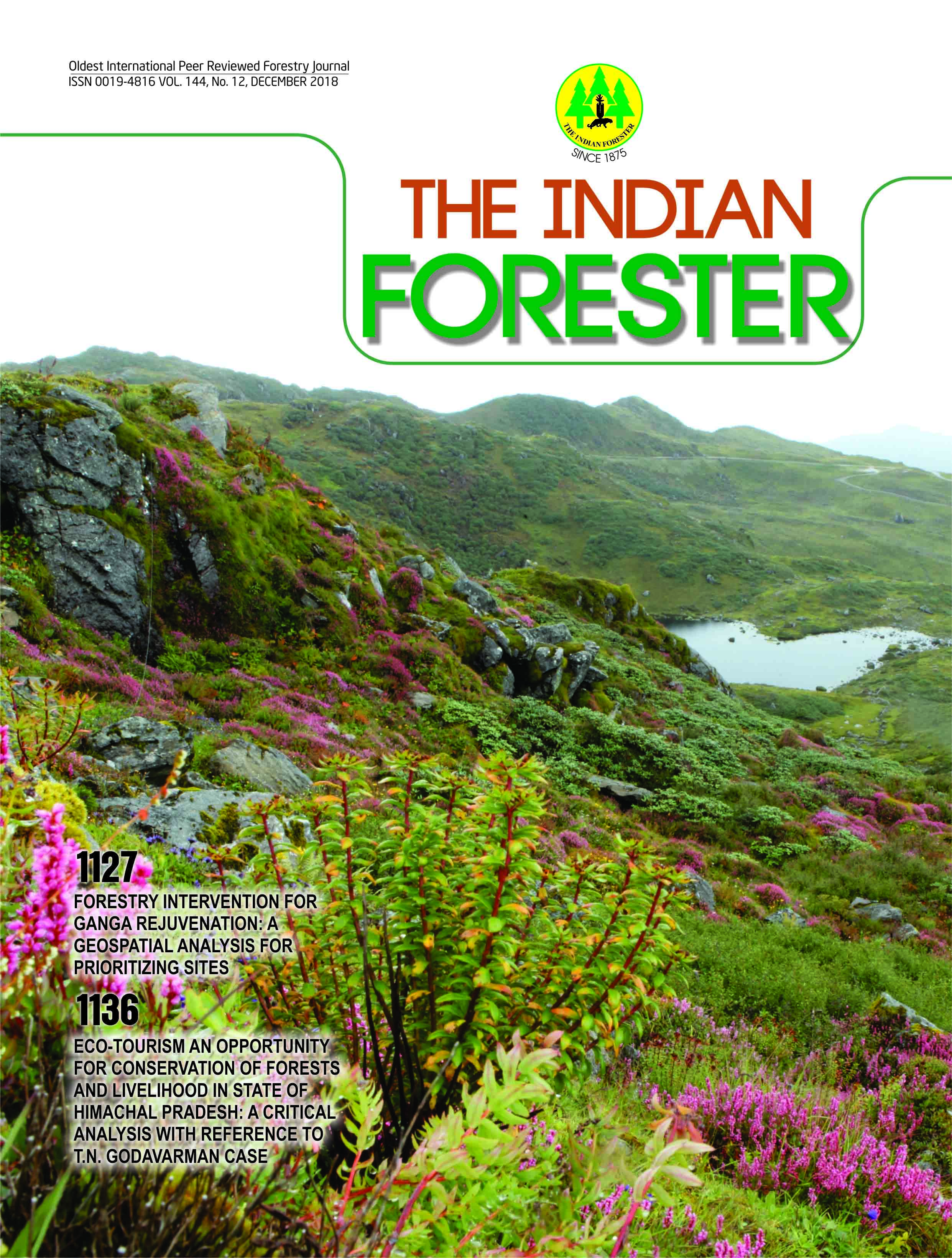Forestry Interventions for Ganga Rejuvenation: A Geospatial Analysis for Prioritizing Sites
DOI:
https://doi.org/10.36808/if/2018/v144i12/141845Keywords:
River Quality, GIS, Water Pollution, Riverscape, Aquatic Ecosystem.Abstract
The river Ganga is the most sacred river and lifeline to millions of Indians. Ganga River has always attracted various groups of people, be it a common man, researcher, philosopher or religious person. Ganga represents one of the most fascinating, complex and dynamic river ecosystems on the planet earth. It's more than just a river and has now become one of the priority concern for ensuring ecological integrity and preserving natural sanctity. Rapid population growth and economic activities directly influencing the river have significantly influenced the extent and the quality of river water. Attempts have been made by the Government of India in recent past to rejuvenate the river to its pristine state. Although there can be various scientific and technical interventions yet natural ways of treating the river could be one of the sustainable options for rejuvenation. Forestry interventions are such promising solutions, though, the question arises as to what are the priority sites for such interventions. The present study demonstrates use of modern tools of remote sensing and geographical information system (GIS) for the identification of priority sites to implement the forestry interventions intended for river Ganga rejuvenation.References
Andréassian V. (2004). Waters and forests: from historical controversy to scientific debate. J. Hydrol., 291:1–27.
Bonell M. and Bruijnzeel L.A. (2005). Forests, water and people in the humid tropics: past, present and future hydrological research for integrated land and water management. Cambridge University Press
Calder I.R. (2007). Forests and water - ensuring forest benefits outweigh water costs. For. Ecol. Manage., 251:110120.
Calder I.R. and Aylward B. (2006). Forest and floods: Moving to an evidence-based approach to watershed and integrated flood management. Water Int., 31:87–99.
Dan Moore R. and Wondzell S.M. (2005). Physical hydrology and the effects of forest harvesting in the Pacific Northwest: A review 1. JAWRA J. Am. Water. Resour. Assoc., 41:763–784.
Dueker K.J. and Kjerne D. (1989). Multipurpose Cadastre: Terms and Definitions. Falls American Society for Photogrammetry and Remote Sensing and American Congress on Surveying and Mapping ... In Proceedings GIS/LIS '97 (volume 1), Falls Church, VA, American Congress.
Dufour S. and Piégay H. (2005). Restoring floodplain forests.In: Forest Restoration in Landscapes. Springer, 306-312 pp.
FRI (2016). Forestry interventions for Ganga. Detailed Project Report, Forest Research Institute. Ministry of Environment, Forest and Climate Change, Government of India, Dehradun.Vol. I and II.
FSI (2011a). India state of forest report 2011. Forest Survey of India. Ministry of Environment & Forests. Government of India, Dehradun.
FSI (2011b). Forest types of India. Forest Survey of India, Ministry of Environment, Forest and Climate Change, Government of India, Dehradun.
GoI (2014). Ganga basin. Government of India. Ministry of Water Resources.
Kumar M., Singh M., Singh H. and Khaiter P. (2014). Assessing Water Regulatory Services Provided By Forests of Uttarakhand:Proposed Meta-Modelling Framework. In: Water and Forests - Beyond traditional forest hydrology. APAFRI, Dehradun, 197-199 pp.
Leopold L.B. and O'Brien Marchand M. (1968). On the quantitative inventory of the riverscape. Water Resour Res., 4:709–717.
Neary D.G., Ice G.G. and Jackson C.R. (2009). Linkages between forest soils and water quality and quantity. For. Ecol.Manage., 258:2269–2281
Downloads
Downloads
Published
How to Cite
Issue
Section
License
Unless otherwise stated, copyright or similar rights in all materials presented on the site, including graphical images, are owned by Indian Forester.





